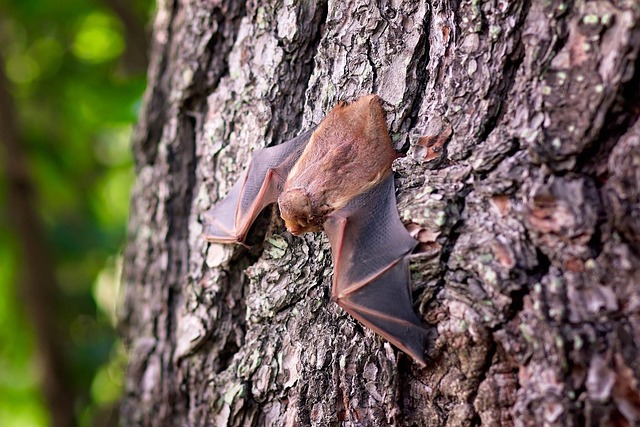Invasions of bats in residential areas pose significant health risks and structural damage concerns. Effective residential bat control requires understanding bat behavior, identifying entry points, and employing humane exclusion methods like sealing off access points and using one-way devices. It's crucial to check local regulations and consult experts before taking action due to legal protections for bats. Maintaining regular inspections, sealing entry points, keeping property clean, and trimming trees help prevent future bat invasions. Adhering to these residential bat control practices ensures safety, comfort, and ecosystem preservation.
Are bats taking over your property? This comprehensive guide provides expert advice on dealing with and preventing bat invasions in residential areas. Understanding the impact of bats and exploring legal aspects of residential bat control is essential. We outline effective strategies for bat-proofing your home, from identifying entry points to implementing long-term solutions. By following these tips, you can ensure a safe, bat-free living space while adhering to local regulations regarding residential bat control.
Understanding Bat Invasions and Their Impact
Understanding Bat Invasions and Their Impact
Bat invasions in residential areas can be more than just an annoyance; they pose significant health and structural risks. Bats are carriers of diseases like rabies, and their droppings (guano) can cause a range of issues, from allergic reactions to damage to roofs and walls due to the acidic nature of guano. Moreover, bat colonies can attract predators, increasing potential safety hazards.
Effective residential bat control is essential for maintaining a safe and healthy living environment. It involves understanding the habits and entry points of bats, as well as employing humane methods to exclude them without causing harm. This process may include sealing off entry points, using one-way exclusion devices, and ensuring proper ventilation to deter future invasions.
Legal Considerations for Residential Bat Control
When dealing with bats on your property, understanding legal considerations for residential bat control is crucial. In many areas, bats are protected by law due to their ecological significance and declining populations. Disturbing or harming them without proper authorization can result in significant fines and legal repercussions. It’s essential to check local regulations and consult with wildlife experts or professionals specializing in residential bat control before taking any action.
Property owners should be aware that bats play a vital role in controlling insects and contributing to a healthy ecosystem. Removing them abruptly might disrupt this balance. Legal methods for dealing with bats include exclusion, where professionals seal entry points while ensuring the bats’ safe release or relocation. This approach respects both the law and the well-being of these creatures.
Effective Strategies for Bat-Proofing Your Property
To effectively bat-proof your property, start by identifying and sealing entry points. Bats can squeeze through tiny cracks, so inspect your walls, roofs, and windows for any openings. Use weatherstripping, caulk, or metal sheeting to close these gaps. Ensure chimneys and vents are properly fitted with screens to prevent bats from entering. Regularly check and maintain these seals to keep bats out year-round.
Next, install one-way exclusion devices during the appropriate season. These allow bats to exit but prevent reentry. Place them over entry points and leave them open until all bats have left for the winter. After that, secure the devices tightly to bat-proof your property. Combining these strategies with regular maintenance will effectively manage residential bat control and keep your home safe and bat-free.
Long-Term Maintenance and Prevention Tips
To ensure long-term protection from bats, incorporate regular maintenance and prevention practices as part of your residential bat control strategy. Regularly inspect your property for any signs of bat entry points, such as broken tiles, cracks in walls, or openings around pipes and vents. Seal these entry points with appropriate materials like caulk or metal screens to prevent future invasions.
Additionally, keep your property clean and clutter-free, as bats are attracted to dark, secluded spaces. Trim trees and shrubs away from your house to reduce hiding places and make it less appealing for bats to nest. Implement robust waste management practices by securing garbage cans with tight-fitting lids and regularly removing compost piles or other potential food sources that might attract bats.
Bats can pose significant challenges for homeowners, but with professional advice on bat-proofing your property, you can effectively manage these issues. Understanding the legal considerations surrounding residential bat control and implementing robust strategies for bat-proofing are essential steps. By combining short-term solutions with long-term maintenance and prevention tips, you can ensure a safe and comfortable living environment while mitigating the impact of bat invasions. Remember, professional guidance is key to navigating these complex issues and achieving successful residential bat control.
